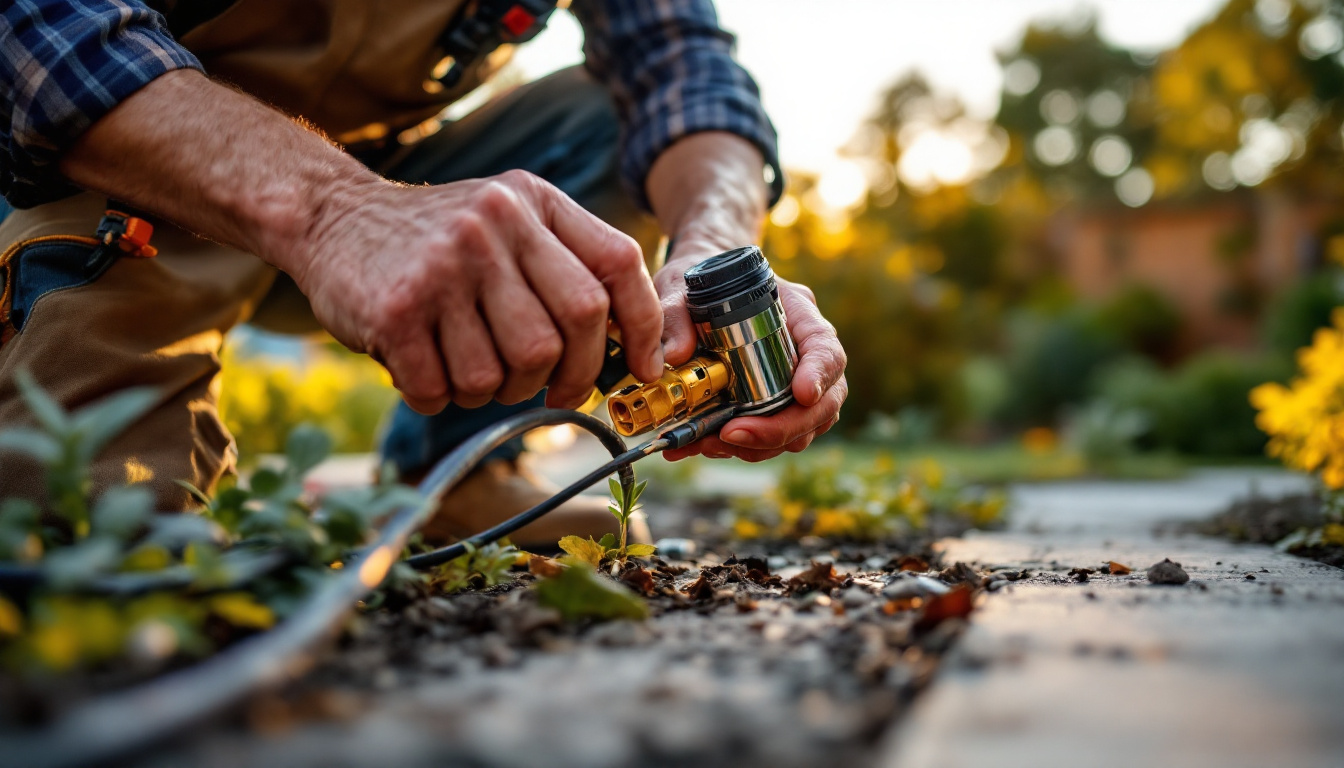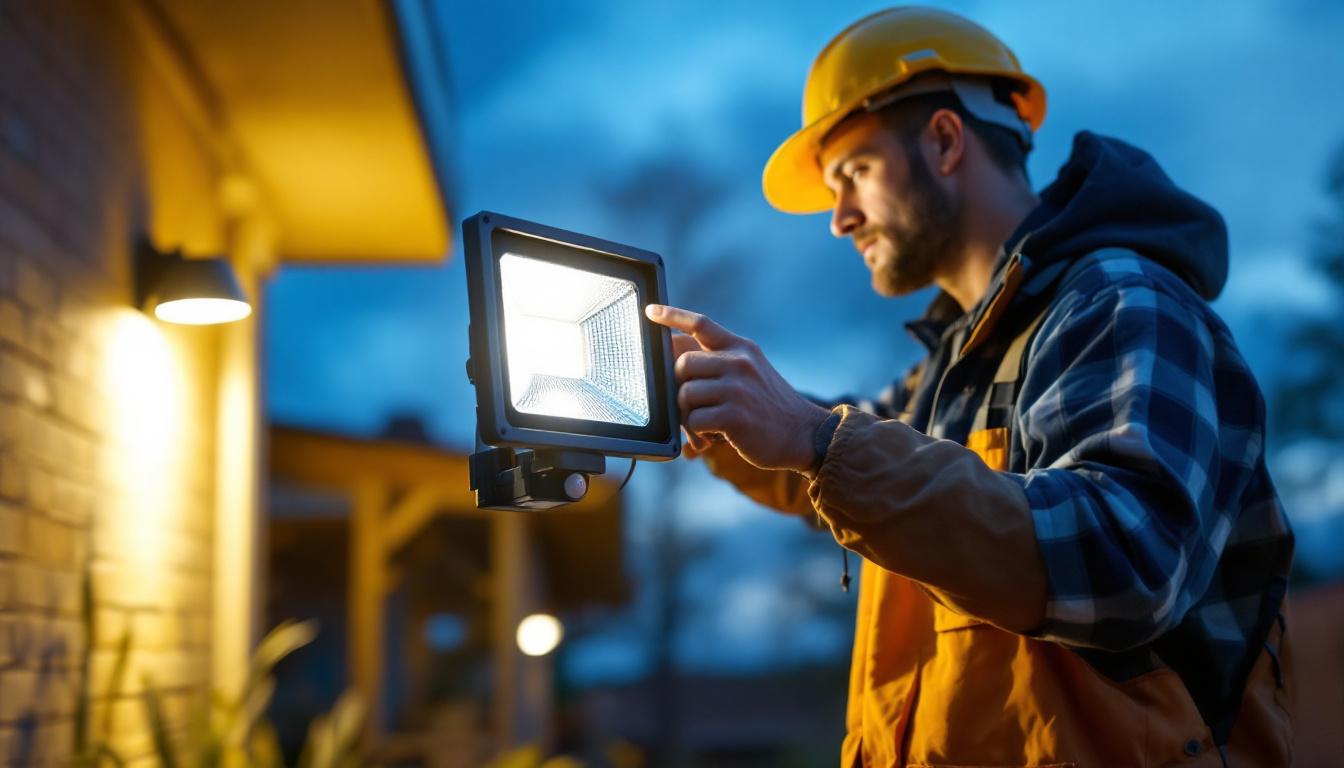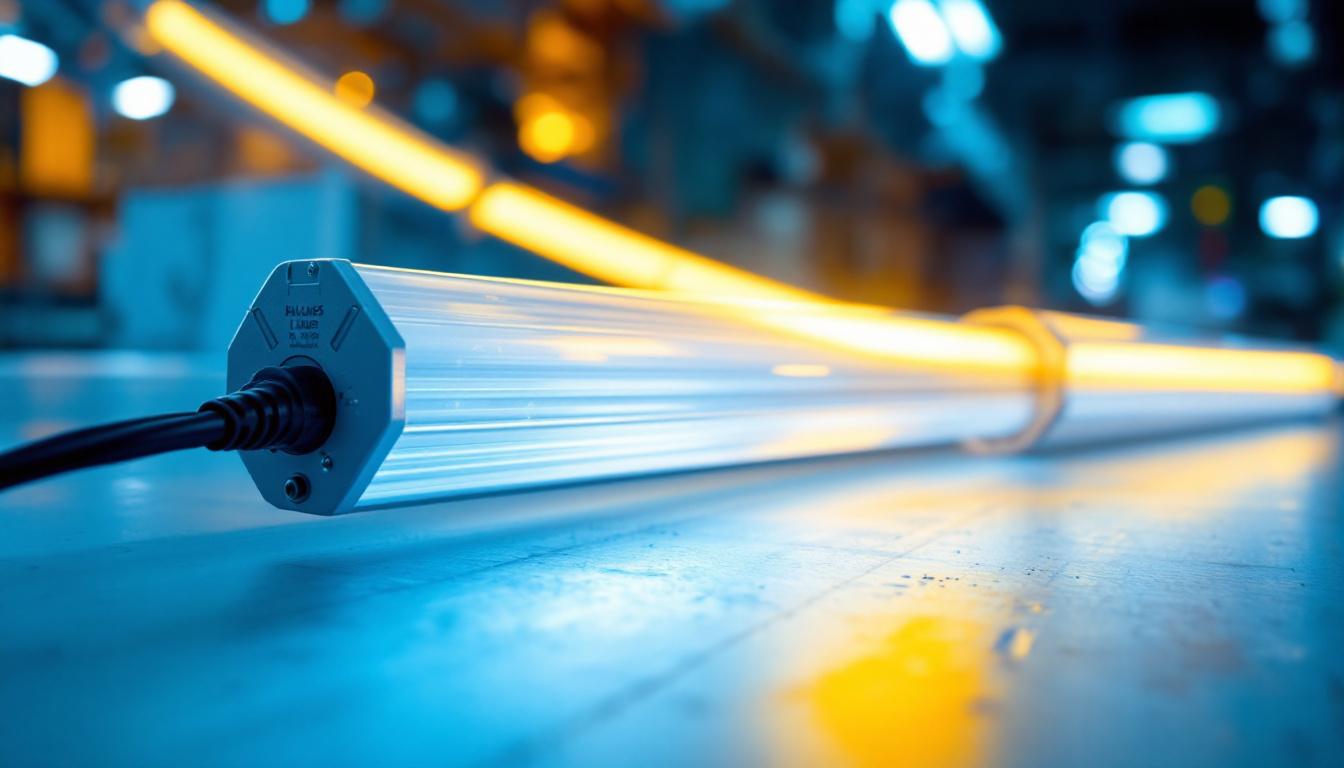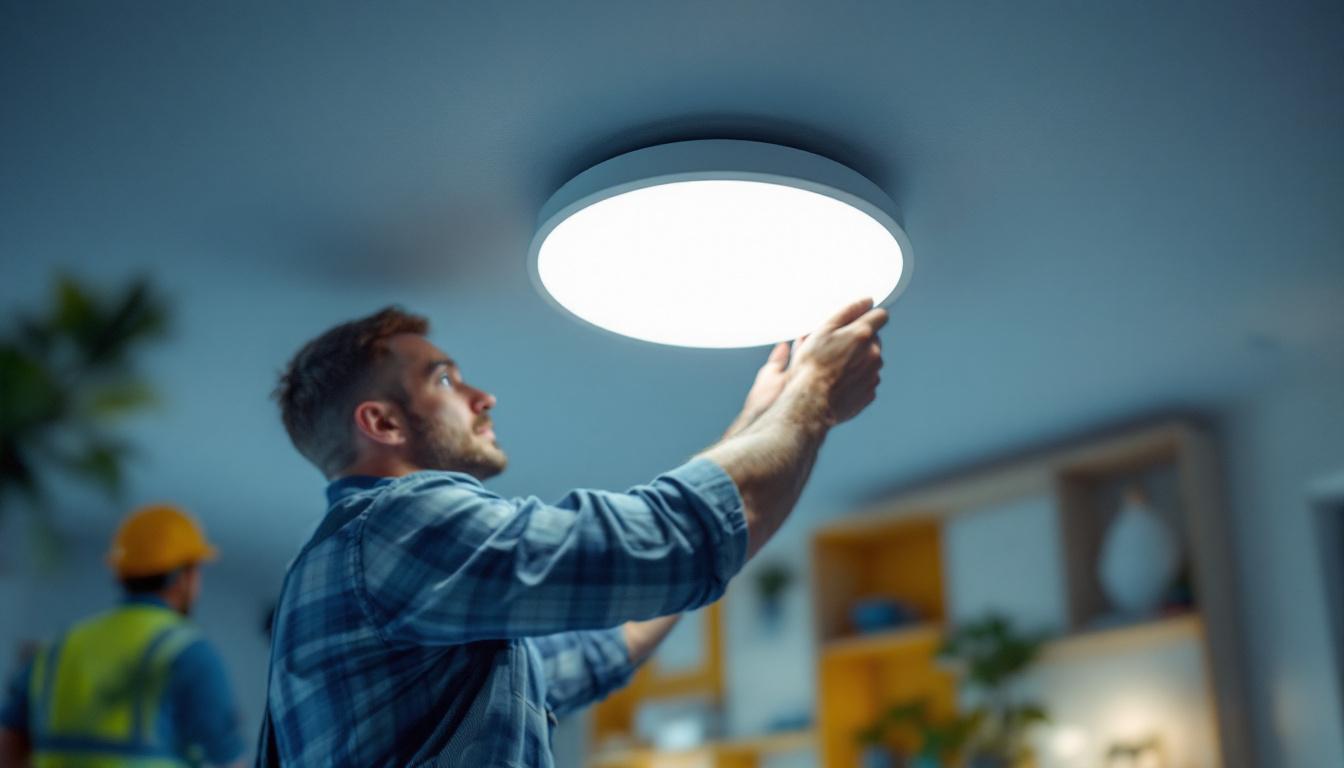
In the world of landscape lighting, the right connectors can make all the difference in ensuring a successful installation. For lighting contractors, understanding the various types of connectors, their applications, and best practices is crucial for delivering quality work that meets client expectations. This article delves into essential information about landscape lighting connectors, offering insights that can enhance both installation efficiency and overall project outcomes.
Landscape lighting connectors serve as the link between various components of a lighting system, including fixtures, transformers, and power sources. Selecting the right type of connector is vital for ensuring both functionality and durability. There are several types of connectors commonly used in landscape lighting, each designed for specific applications.
There are several types of connectors that lighting contractors should be familiar with. These include wire nuts, crimp connectors, and waterproof connectors. Each type has its own unique advantages and disadvantages, making it essential to choose the right one for the job.
Wire nuts are the most common type of connector used in low-voltage landscape lighting. They are easy to use and provide a secure connection for multiple wires. However, they may not be the best choice for environments exposed to moisture.
Crimp connectors offer a more robust option and are often used in applications where a strong, permanent connection is required. They require a crimping tool for installation, which can add to the overall project time but ensures a reliable connection. Waterproof connectors are specifically designed to withstand outdoor conditions and are ideal for areas prone to water exposure.
When selecting connectors, consider the specific requirements of the project. Factors such as the type of lighting fixtures, the environment, and the expected lifespan of the installation should all influence the choice of connectors. For example, if the installation is in a damp area, waterproof connectors should be prioritized to prevent corrosion and ensure longevity.
Moreover, it’s essential to consider the wire gauge and the number of wires being connected. Using connectors that are rated for the appropriate wire gauge will help prevent overheating and potential failure of the lighting system.
In addition to these considerations, it’s also important to think about the ease of maintenance and future upgrades. Some connectors allow for quick disconnection, which can be beneficial if you plan to change fixtures or make adjustments to your lighting design. For instance, using connectors that can be easily unplugged can save time and effort during seasonal changes or repairs. Furthermore, investing in high-quality connectors might have a higher upfront cost but can lead to significant savings in the long run by reducing the need for frequent replacements and repairs.
Lastly, always ensure that the connectors you choose comply with local electrical codes and standards. This not only guarantees safety but also ensures that your landscape lighting system operates efficiently. Familiarizing yourself with these regulations can help prevent costly mistakes and ensure that your installation meets all necessary safety requirements. By taking the time to understand the various types of connectors and their applications, you can create a landscape lighting system that is both visually appealing and functionally sound.
Proper installation of landscape lighting connectors is critical for ensuring the reliability and safety of the entire lighting system. Following best practices can help contractors avoid common pitfalls and deliver high-quality installations that satisfy clients.
Before beginning any installation, thorough planning is essential. This includes assessing the site, determining the layout of the lighting system, and selecting the appropriate connectors. Taking the time to plan can prevent costly mistakes and ensure a smoother installation process.
Additionally, contractors should gather all necessary tools and materials before starting the installation. This includes connectors, wire, tools for stripping and cutting wire, and any other equipment needed for the job. Having everything on hand can help streamline the process and reduce downtime. It is also beneficial to familiarize oneself with the specific requirements of the landscape and the preferences of the client. Understanding the desired ambiance and functionality can guide the selection of lighting fixtures and their placement, ensuring that the final result meets or exceeds expectations.
One of the most critical aspects of connecting landscape lighting is ensuring that wires are stripped properly. Incorrectly stripped wires can lead to poor connections, which may result in flickering lights or complete system failure. When stripping wire, it is important to remove just enough insulation to expose the copper without damaging the wire itself.
Once the wires are stripped, the connection process can begin. For wire nuts, twist the wires together firmly before screwing on the nut. For crimp connectors, ensure that the wire is fully inserted into the connector before using the crimping tool. Following the manufacturer’s instructions for each type of connector is essential for achieving the best results. Furthermore, it is advisable to test each connection with a multimeter to confirm continuity and ensure that the connections are secure. This extra step can help identify any issues before the system is fully powered, saving time and resources in the long run.
Moreover, considering the environmental factors that can affect the longevity of the connections is crucial. For instance, using connectors that are rated for outdoor use can prevent corrosion and damage from moisture. Additionally, employing heat shrink tubing or electrical tape can provide an extra layer of protection against the elements, ensuring that the connections remain intact and functional throughout the seasons. By taking these precautions, contractors can enhance the durability of the lighting system, ultimately leading to greater client satisfaction and fewer service calls in the future.
Safety should always be a top priority when working with landscape lighting systems. Ensuring that all connections are secure and compliant with local codes is essential for protecting both the contractor and the client. A well-planned approach not only minimizes risks but also enhances the longevity and performance of the lighting system, providing peace of mind for all parties involved.
Each region has specific electrical codes that govern the installation of outdoor lighting systems. Familiarizing oneself with these codes is crucial for ensuring compliance and avoiding potential fines or project delays. Contractors should consult local regulations and, if necessary, seek guidance from a licensed electrician. This proactive approach can also facilitate smoother inspections, as adherence to codes often results in quicker approvals and fewer revisions.
In addition to local codes, it is important to adhere to the National Electrical Code (NEC) guidelines. These guidelines provide a framework for safe electrical practices and can help contractors avoid common mistakes that could lead to safety hazards. Understanding these codes can also empower contractors to make informed decisions about the types of fixtures, wiring, and installation methods that are most appropriate for their specific projects. Knowledge of the NEC can also enhance a contractor’s credibility, as clients often appreciate working with professionals who prioritize safety and compliance.
After completing the installation, testing all connections is vital. This step ensures that the system is functioning correctly and that there are no issues that could lead to failures down the line. Use a multimeter to check for continuity and voltage at each connection point. Additionally, it’s advisable to perform a visual inspection of the entire system, looking for signs of wear, corrosion, or loose connections that could compromise safety.
Identifying and rectifying any issues before the project is completed can save time and resources in the long run. Additionally, it demonstrates professionalism and attention to detail, which can enhance the contractor’s reputation in the industry. Regular testing and maintenance of landscape lighting systems can also extend their lifespan and improve energy efficiency, ultimately benefiting both the contractor and the client. By establishing a routine for checking connections and components, contractors can ensure that their installations remain safe, compliant, and effective over time, fostering long-term relationships with clients who value quality and reliability in their outdoor lighting solutions.
Even with the best installation practices, issues can arise over time. Understanding how to maintain and troubleshoot landscape lighting systems is essential for contractors who want to provide ongoing support to their clients.
Encouraging clients to conduct regular inspections of their landscape lighting systems can help identify potential issues before they become significant problems. This includes checking for loose connections, damaged wires, and signs of corrosion.
Contractors should provide clients with a maintenance schedule that outlines when to perform inspections and what to look for. This proactive approach can help extend the lifespan of the lighting system and enhance client satisfaction.
When problems arise, knowing how to troubleshoot common issues can save time and frustration. Some typical problems include flickering lights, lights that won’t turn on, or inconsistent brightness. In many cases, these issues can be traced back to poor connections or damaged wires.
For flickering lights, check all connections to ensure they are secure. If a light won’t turn on, inspect the transformer and check for blown fuses. By systematically addressing these issues, contractors can quickly restore functionality to the lighting system.
Landscape lighting connectors are a vital component of any outdoor lighting system. By understanding the different types of connectors available, following best practices for installation, ensuring safety and compliance, and being prepared for maintenance and troubleshooting, lighting contractors can deliver high-quality installations that meet client expectations.
Investing time in learning about connectors and their proper use can lead to more efficient installations and satisfied clients. As the demand for landscape lighting continues to grow, staying informed about the latest best practices will help contractors remain competitive in the industry.
Ultimately, a well-executed landscape lighting project not only enhances the beauty of outdoor spaces but also provides safety and security for homeowners. By adhering to the best practices outlined in this article, lighting contractors can ensure their projects shine brightly for years to come.
Ready to elevate your landscape lighting projects with connectors that promise quality and durability? Look no further than LumenWholesale. Our extensive selection of spec-grade lighting products is designed to meet the highest industry standards, ensuring you deliver installations that stand the test of time. Say goodbye to inflated markups and hello to unbeatable wholesale prices, free shipping, and the convenience of bulk buying. Don’t compromise on quality or value—choose LumenWholesale for your next project. Wholesale Lighting at the Best Value is just a click away.

Discover why lighting contractors should prioritize exit signs with lights in their projects.

Discover everything lighting contractors need to know about sensor floodlights in this comprehensive guide.

Discover the role of fluorescent light ballasts in energy efficiency and cost reduction for lighting contractors.

Discover essential tips and strategies for lighting contractors to prevent common pitfalls with wafer recessed lighting installations.